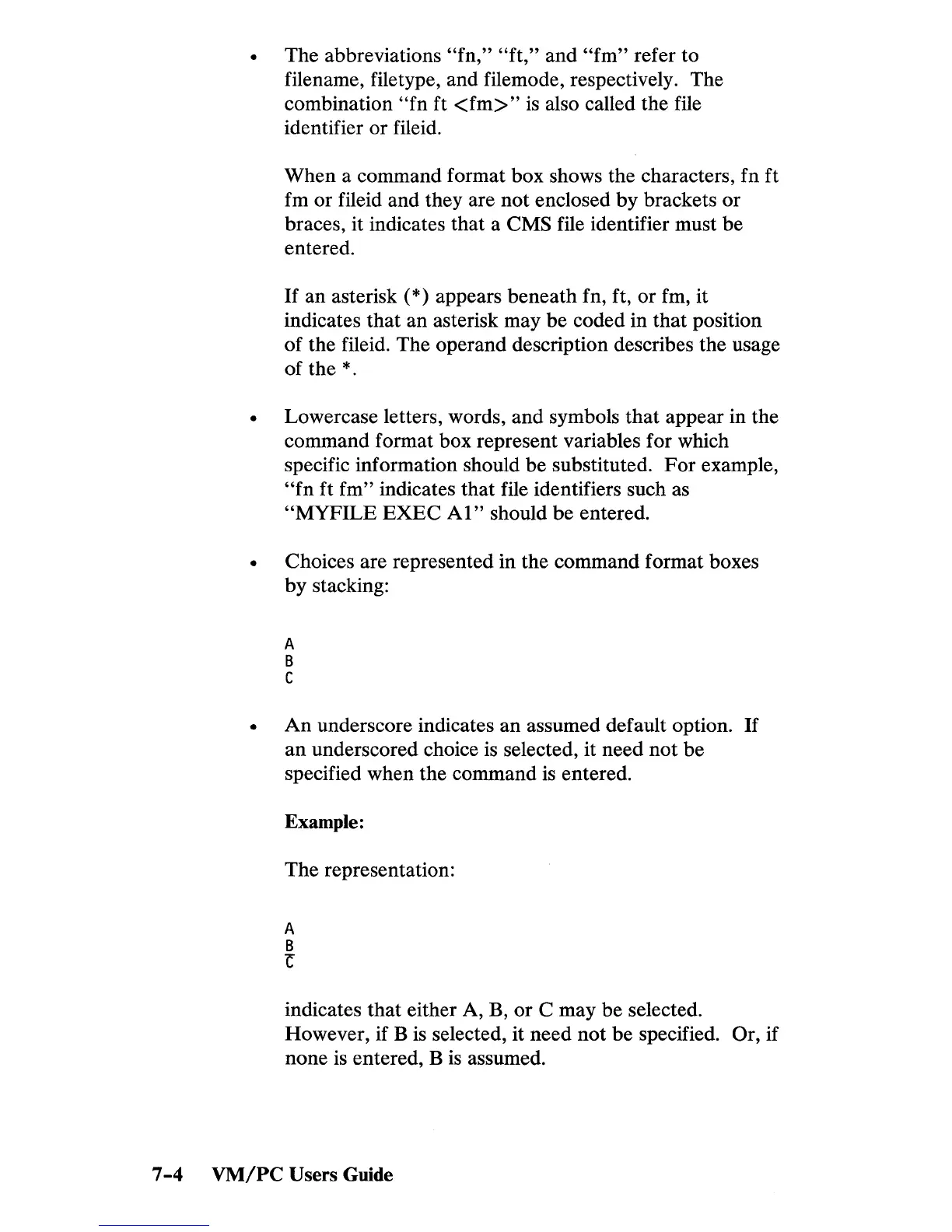The
abbreviations
"fn,"
"ft,"
and
"fm"
refer
to
filename, filetype,
and
filemode, respectively. The
combination
"fn
ft
<fm>"
is
also called the file
identifier
or
fileid.
When
a command format box shows the characters, fn ft
fm
or
fileid and they are
not
enclosed
by
brackets
or
braces, it indicates
that
a CMS file identifier must
be
entered.
If
an asterisk (*) appears
beneath
fn, ft,
or
fm, it
indicates
that
an asterisk may
be
coded in
that
position
of
the fileid. The operand description describes the usage
of
the
*.
• Lowercase letters, words,
and
symbols
that
appear in the
command format box represent variables for which
specific information should
be
substituted.
For
example,
"fn
ft
fm"
indicates
that
file identifiers such as
"MYFILE
EXEC
AI"
should
be
entered.
• Choices are represented in the command format boxes
by
stacking:
A
B
C
An
underscore indicates
an
assumed default option.
If
an
underscored choice is selected, it
need
not
be
specified when the command is entered.
Example:
The
representation:
A
B
C
indicates
that
either A, B,
or
C
may
be
selected.
However, if B is selected, it
need
not
be
specified. Or, if
none
is entered, B
is
assumed.
7
-4
VM/PC
Users Guide

